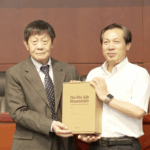Discovered in 1942 in a tomb from the Warring States period (475-221 BCE), the Chu Silk Manuscripts predate even the Dead Sea Scrolls, offering unparalleled insights into China’s ancient cosmogony. These 24.8 cm x 38.7 cm silk fragments, inscribed with ink and vermilion, recount a celestial creation myth involving deities like Fuxi and Nuwa – a narrative foundational to Chinese philosophical thought.
Lost during wartime upheavals, the manuscripts resurfaced in the US through controversial circumstances. Documents reveal they were smuggled overseas in the 1940s by dealers capitalizing on China’s instability, eventually acquired by the Sackler Gallery in 1994. Scholars like Dr. Li Xiaomin of Peking University stress their value: "These texts bridge China’s Bronze Age beliefs with Daoist traditions – their absence leaves a gap in our understanding."
Efforts to repatriate the artifacts gained momentum following Beijing’s 2022 national heritage inventory initiative. The China Cultural Relics Recovery Association reports over 10 million objects remain abroad illegally, with the Chu manuscripts prioritized. While US institutions cite legal acquisition, pressure mounts from academic coalitions advocating ethical restitution.
As dialogue continues, the manuscripts symbolize broader debates about cultural stewardship. "Heritage belongs to humanity," notes UNESCO advisor Elena Petrov, "but its physical home matters for historical continuity." For China’s diaspora communities, their potential return represents reconnection with ancestral wisdom nearly erased by time.
Reference(s):
cgtn.com








